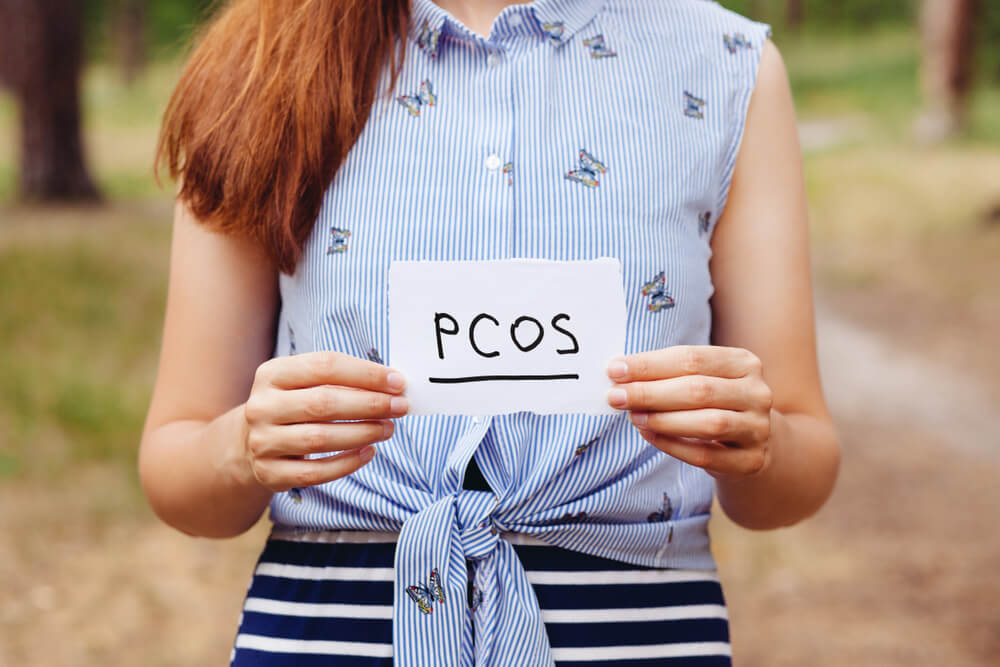PCOS (polycystic ovary syndrome) is a typical cause of infertility in women, affecting up to 12% of the female population in the United States. That being said, if you’ve ever been diagnosed with PCOS or you’re suspecting the condition, you might have also heard about PCOD (polycystic ovarian disease). Although some people use the two interchangeably, it’s important to stress that PCOS and PCOD are different. This article shines a light on PCOD vs. PCOS, the differences between them, the symptoms, diagnosis, and treatment. We also give tips for the best PCOS diet.
Before scrolling further, we’d also want to remind you that it’s essential to consider an ultrasound appointment before self-diagnosis. A professional healthcare provider will guide you through the recovery process.
With that in mind, here is everything you need to know about PCOD vs. PCOS.
PCOS and PCOD: What’s the Difference?
Before explaining the main differences between PCOD vs. PCOS, let’s first understand what polycystic ovary syndrome and polycystic ovarian disorder refer to.
PCOS is a severe metabolic disorder that can lead to health complications such as heart disease, endometrial cancer, type 2 diabetes, and high blood pressure. With PCOS, the ovaries produce boosted androgen levels (male hormones that can cause PCOS acne) than typical. As a result, this interferes with egg formation and release. As a result, women with PCOS have eggs that become cysts (tiny sacs full of liquid). Rather than being discharged after ovulation, the cysts accumulate in the ovaries and sometimes even expand. The chances of a woman getting pregnant with PCOS are minimal to zero, or if it happens, there is a high risk of miscarriage.
With polycystic ovarian disorder, the ovaries expand and secrete great amounts of androgens, disrupting the woman’s health. With PCOD, the ovaries release many semi-mature or immature eggs that eventually become cysts. However, PCOD does not affect a woman’s fertility as much as PCOS. Also, polycystic ovarian disease doesn’t have as many severe complications as polycystic ovary syndrome.
So, to summarize, here’s what you need to know about PCOD vs. PCOS:
Key Features of PCOS

Here are some of the must-know facts about polycystic ovary syndrome:
- A serious medical condition that may lead to infertility
- A metabolic disorder that may result in anovulation
- Getting pregnant with PCOS is highly unlikely, or it can raise the risk of miscarriage and other complications like premature birth
- It can cause other complications such as endometrial cancer and type 2 diabetes
- May lead to PCOS acne
Key Features of PCOD
Whereas, here are some of the most important features of polycystic ovarian disease:
- It is more common than PCOS
- It is a disorder in which ovaries produce semi-mature or immature eggs
- Usually happens as a result of obesity, hormonal imbalance, stress, and overall, a poor lifestyle
- Usually doesn’t affect a woman’s fertility, but she may have trouble getting pregnant (medication may be needed)
- Typically doesn’t have other serious complications
Symptoms of PCOD and PCOS
Some women need to start PCOS treatment as early as their first menstruation during puberty. Also, polycystic ovary syndrome can develop later in life, for instance, due to obesity and an unhealthy lifestyle.
Remember, the symptoms and signs of the disorder vary from one woman to the next. Namely, some women may experience some of the following signs, while others may have other symptoms. So make sure to consult with a medical professional at a reliable clinic and get a PCOS ultrasound.
With this in mind, here are some of the most common symptoms of both PCOD and PCOS:
- Excessive androgen levels (may lead to physical symptoms such as excess of body hair and facial hair& hirsutism, and PCOS acne)
- Irregular, infrequent, or prolonged menstruation (also includes abnormally heavy menstruation)
- Polycystic ovaries (enlarged ovaries with follicles surrounding the egg)
Usually, the symptoms are more severe if the patient is obese and sedentary.
How are PCOD and PCOS Diagnosed?
Your doctor will ask you routine questions about your medical history and the symptoms. You can also expect a physical exam, including a pelvic exam.
When it comes to diagnosing the symptoms, a professional will perform a PCOS ultrasound to look at the size of your ovaries and the thickness of the endometrium. Moreover, the doctor will check for any cysts.
You may also require blood tests to analyze androgen and other hormone levels. Additionally, your doctor may want to check the blood glucose levels too.
Causes of PCOS and PCOD
If you’ve done the PCOS ultrasound and your doctor confirmed you have this disorder, you may feel confused, especially if you’re of average weight. In reality, there are many reasons why PCOS or PCOD may happen in a woman’s body. Here are some of the most common causes of these disorders:
- Excess insulin levels
- Genetics
- Extra androgen, or male hormones
- Low-grade inflammation
Insulin refers to the hormone created in the pancreas. If your body produces excessive levels of insulin, this might, in turn, increase the production of androgen. Usually, patients who eat a high-sugar, high-refined carbohydrate diet (paired with lack of exercise) have higher insulin levels.
PCOS Treatment: How Does it Work?
If you’ve just been diagnosed with PCOS or PCOD, you might feel anxious, scared, or even depressed. Luckily, there are many ways to cure this disorder that may require time and effort. Here are some of the most effective methods of treatment:
- Following a PCOS diet and making other lifestyle changes
- Ovulation causing medication
- Birth control pills
- Diabetes medication
As you can see, patients have choices regarding PCOS treatment. Your healthcare professional may advise you on one method or a combination of a few.
When it comes to ovulation-causing medication, it’s important to highlight that this treatment method may pose certain risks. For example, it may boost the patient’s chances of multiple births (twins). Also, these medications can lead to ovarian hyperstimulation, a term that refers to the ovaries releasing an excess of hormones. Women who experience ovarian hyperstimulation can feel pelvic pain and abdominal bloating.
PCOS Diet: The Basics

Diet and exercise are essential when it comes to PCOS treatment. In brief, you’ll want to consume nutrient-dense whole foods and limit added sugar, refined carbohydrates, inflammatory oils, and fast food products. Here are some key foods to include in your PCOS diet:
- Fiber-rich vegetables such as cauliflower, brussels sprouts, and broccoli
- Greens like arugula and kale
- Red and green peppers
- Lentils and beans
- Lean protein, like chicken breast and fish
- Anti-inflammatory spices like turmeric
Trained Specialists That Are Here to Help
Whether you’ve been diagnosed with PCOS or PCOD, or you have a loved one suffering from one of these disorders, rest assured that we’re here to help. The Carreras Medical Center is located in Hialeah, Florida, and our team of skilled professionals will guide you through the process of healing. Book your appointment today.


